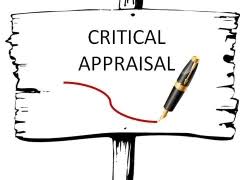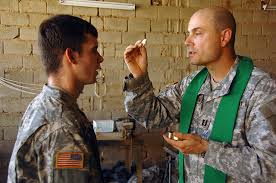
Macroeconomics for Global Decision Making
Order Instructions:
Macroeconomics for Global Decision Making
Please type all answers. Page numbers. Bibliography. No title page. You can have as many sources as you want. I put down a minimum of (6) sources however, that?s just a minimum. If you need to add more, please do so. Answer All Questions and Clearly Define Your Terms Place your answer to each question on a separate sheet of paper and type answers to all questions. Document your answers and show your work. Read each question carefully and answer all parts. The number in parentheses is the point weight for the question. Make sure you label your questions, ex. 1.) A:, 1.) D: ?. And so on. You may add another page for graphs or figures. Number each page and clearly indicate the question number.
(50) 1. (a) Aggregate Demand is defined as:
AD = C + I + G + NX
Where AD is aggregate demand, C is consumption expenditures, G is government (federal and state and local) expenditures, and NX is net exports (Exports ? Imports).
To encourage the growth of AD, fiscal policy can influence G through changes is expenditures, such as the fiscal stimulus of 2008 and 2009, and on C by changes in transfer payments such as Medicaid, Medicare, unemployment benefits and Social Security that change disposable income. If such changes take place, how are they transmitted to increase both GDP and employment? When are they least effective and most effective in changing GDP and Employment? Has the large fiscal stimulus in 2009 had the benefits that Congress and the Administration had anticipated?
(b) Suppose the Fed has already decided that it wants to target the money stock.
(1) Will the Fed come closer to its target by setting the interest rate at a given level, or will it do better by fixing the money supply through open market operations? In your analysis, think in terms of the Fed’s horizon from one Open Market Committee meeting to another — about 4-6 weeks. This analysis involves the relative stability of money demand and the money multiplier. Consider two alternative cases: (1) a stable demand for money allows the Fed to set an interest rate that ensures it will come close to the target money supply; and (2) an unstable demand for money.
(2) In your analysis, discuss the proposition that the Fed may need to target interest rates in the short run in order to meet its target money stock while in the long run it may need to pay attention to interest rates and bank reserves and currency growth. NOTE: Shifts in money demand may reveal themselves first in movements in interest rates — and if the Fed wants to stabilize the economy, it should respond to shifts in money demand.
(c) Within the same general context, discuss why the Fed, if it wants to stabilize and grow GDP and employment, has chosen a quantitative easing (QE) approach by growing bank reserves though purchases of Treasury securities and mortgage-backed securities and the monetary base rather than an interest rate policy (presently QE2 policy is to purchase $85 billion per month of Treasury and mortgage-backed securities? Why has the European Central Bank (EU) and Japan followed the same policy? How does this process work to stimulate economic growth? Has the QE policy since 2011 worked to increase GDP growth and employment?
(d) In the case of a liquidity trap, what is it that makes monetary policy ineffective in such a case? Recall that effective monetary policy requires that banks lend to willing borrowers. What does it mean for an effective monetary policy if the velocity of money declines substantially?
Velocity (V) = Price Level (P)*Real Output (Y) / Money Supply(M)
V = P*Y/M2
Or to look at it another way: P*Y = V*M2
So a change in M2 will lead to smaller changes in P*Y the smaller is V.
(50) 2. There are many views of the state of the global economy in the late Summer early Fall of 1998. Below are some of these views. From your reading of Commanding Heights (Yergin and Stanislaw), current news accounts, research into various economies and Macroeconomics (Dornbusch and Fischer), critically analyze these statements as to the type of policies that national economies and the IMF should pursue over the course of the next few years. Has the free market system of capitalism failed and the “battle between government and the marketplace that is remaking the modern world” (Yergin and Stanislaw) tilting toward government? Or, is there a middle ground that needs to be reached with a global regulatory structure created that makes countries and their financial systems more transparent and less tied to “crony capitalism”? Express your views, but back them up with fact and supporting argument.
The Economist (September 5, 1998) “The World Economy on the Edge: The risks of a deep global recession are increasing. But it can be avoided so long as policymakers heed some lessons from history.”
The Economist (September 5, 1998) “The Economist all-items commodity-price index has fallen by 30 percent since mid-1997, to its lowest level in real terms for over 25 years. The prices of industrial commodities are now at their lowest in real terms since the 1930s. This has severely hurt commodity producers, not just in Latin America and Africa, but also in Australia and Canada.” (add in the U.S. farmers).
The Economist (September 5, 1998) “Capitalism in retreat? A related and more worrying backlash against the free markets is the increasing interest on the part of politicians and economists in market intervention or capital controls as a solution to the crisis…..On September 1st, Malaysia imposed strict controls on capital movements. And respected American economists are also now arguing the virtues of capital controls. This, he (Paul Krugman) suggests, would break the link between domestic interest rates and exchange rates to get their economies growing again….Indeed, the biggest risk now to the world economy may lie not so much in a deep recession, which could be averted. It is that there may be a wholesale retreat for free markets.”
Robert Kuttner (Washington Post, September 7, 1998, p. A25) “Free Markets and a Free Fall World Economy. Economic reconstruction after World War II accepted the necessity of a mixed economy. In that era, the United States and the International Monetary Fund recognized that emergent economies could no be the prisoners of private speculative capital. The postwar system regulated private money flows and stabilized currencies to allow nations to develop. Today’s IMF, perversely demands exposure to speculators as a precondition of assistance….What we need is a program of stabilization and reconstruction in the spirit of the post-World War II years, with limits on speculative money flows and more development aid.”
Washington Post, December 22, 1997, p. A1) “IMF Credibility Is on the Line In Asia Bailout, Agency Should Rethink Rescues, Some Critics Say, ‘Since the time the IMF has signed each Asian bailout program, the respective Asian currencies have continued to plummet,’ said Jeffrey Sachs.”
Jeffrey Sachs (The Economist, September 12, 1998, p. 23) “Global Capitalism, Making It Work. “Global capitalism genuinely is the best chance for the developing world to gain a foothold on the economic-growth ladder; but with current institutions, global capitalism will not succeed widely enough or credibly enough to create a stable world system…. The IMF bought into the investment bankers’ mantra: exchange-rate stability above all else…. The more these economies tried to defend their currencies, the more they incited panic.”
George Soros (The Wall Street Journal, September 15, 1998, Op. Ed) “The Crisis of Global Capitalism. …there remains the urgent need for Congress to authorize an increase in the capital for the IMF….Bailouts did encourage foolish behavior by banks and other lenders, which could count on the IMF when a country got into difficulties (a moral hazard problem). But, the moral hazard now operates in the opposite direction, in not enabling the IMF to do its work when it is most needed.”
Henry Kissinger (Washington Post, October 5, 1998, p. A21) “Perils of Globalism, The IMF is no longer suited for dealing with economic crises. The IMF must be transformed. It should be returned to its original purpose as a provider of expert advice and judgement, supplemented by short-term liquidity support…. Regulatory systems should be strengthened and harmonized; the risks that investors are taking should be made more transparent.
John Maynard Keynes, 1931 “We are today in the middle of the greatest economic catastrophe of the modern world…the view is held in Moscow that this is the last, the culminating crisis of capitalism and that the existing order of society will not survive it.” As quoted in The Economist (September 5, 1998), page 19.
(15) 3.) The growth accounting equation is (Y is aggregate GDP in real terms):
Growth rates of K (capital) and N (labor) are weighted by their respective income shares, so that each input contributes an amount equal to the product of the input?s growth rate and their share of income to output growth. The ? indicates the change in the variable.
Growth Accounting Equation In Per Capita Terms:
(a) Define the notion of steady state equilibrium for the economy that is the combination of per capita GDP (y) and per capita capital (k) where the economy will remain at rest, or where per capita economic variables are no longer changing OR
In steady state, at what rate will GDP (Y) grow?
(b) Explain why, in the Neoclassical growth model, an increase in the savings rate does not increase the growth rate of per capita output in the long run.
(c) Explain why:
(1) An increase in the rate of growth of the population, n, reduces the steady state level of k and y
(2) An increase in n increases the steady state rate of growth of aggregate output
and
(1) A decrease in n increases the steady state level of k and y
(2) A decrease in n decreases the steady state rate of growth of aggregate output.
SAMPLE ANSWER
Question one
- Fiscal policy
Fiscal policy is a combination of the policies of the government spending that influence a country’s macroeconomic conditions. Therefore, through fiscal policy, unemployment rates are improved, control inflation is controlled, business cycles are stabilized and interest rates are influenced by regulators in an attempt to control the economy (Dornbusch & Fischer, 1994).
Therefore, changes in government expenditures and consumption expenditures are likely to significantly influence the rate at which the GDP grows. For instance, increased government expenditures both state and federal means that the funds are either invested or directed into improvement of the infrastructure especially construction of more highways for improved movement of goods or increasing electricity supply which ensures that both companies and individuals can produce goods with ease (Krugman & Wells, 2006). As a result more companies tend to be created meaning that the GDP is eventually increased. This implies that additional government (state and federal) expenditures lead to increased GDP, creation of job opportunities as well as lowering of the unemployment rates. This a clear indication that government expenditures are directly proportional to the GDP, whereby an increase in government expenditures results to an increase in the GDP while a decrease in government expenditures results to a decrease in the GDP. A combination of increased government expenditures with increased GDP subsequently boosts production and demand as well as reducing the rate of unemployment.
Alternatively, a decrease in the consumption expenditures also translates to increased GDP and employment mainly because it reduces the proportion of funds the government consumes and which cannot be invested or directly used to improve the investment environment for both local and foreign investors. Moreover, the changes in government expenditures are most effective when a balance is achieved between the government expenditures and consumption expenditures. For example, when the government expenditures are increased and directed towards improving investment environment or invested while at the same time ensuring that consumption expenditures are maintained low (Krugman, 1990). On the other hand these changes are least effective in changing GDP and employment sometimes because the government usually obtains all its funds from the taxes i.e. from the productive activities’ of the private sector. Moreover, these changes are also perceived to disproportionately affect particular groups where, for instance, increased government expenditures greatly influence the group where the spending is directed, which in the case of government spending on building highways construction workers are significantly influenced (Krugman & Wells, 2006).
Even if not all the benefits anticipated by Congress and the Administration were accrued from the large fiscal stimulus in 2009, there are significant benefits that were achieved. According to Bartlett (2010) the entire stimulus package resulted to 2.8% real GDP growth in the third quarter as well as employment of between 600,000 and 1.6 million people as a result of the stimulus package. The stimulus package was also found to have benefits in terms of transfer payments and tax cuts, for example, tax cuts for individuals in the low-income group raised the GDP by $1.70 for every $1 or revenue loss; whereas the tax cuts for the corporations and the rich raised the GDP by about 50 cents for every $1 or revenue loss (Bartlett, 2010).
- Money stock
- The Fed would come closer to its target by fixing the money supply through open market operations because the targeted supply of money is not directly related to the interest rate. Therefore, this means that an increase in the quantity of produced goods and/or the price level increases, there will be an outright increase in the demand for money. However, if there is a decline in the economic activity and/or prices go down, then there will be an outright decrease in the demand for money. The money supply through open market operations means the demand for money is unstable which implies that the interest rate cannot be set at a certain level (Krugman & Wells, 2006).
- The Fed may need to target interest rates in the short run in order to meet its target money stock while in the long run it may need to pay attention to interest rates and bank reserves and currency growth. This is mainly because the interaction between the quantity of supplied and demanded money is the one which determines the interest rates. This is mainly because when the interest rate is too high, then people will purchase bonds meaning the money will definitely be reduced. However, a greater demand for the bonds reduces the interest rates which push them towards the equilibrium (Krugman & Wells, 1989).
- Quantitative Easing (QE)
In order for Fed to stabilize and grow GDP and employment, quantitative easing (QE) approach by growing bank reserves though purchases of Treasury securities and mortgage-backed securities and the monetary base should be the most preferred approach rather than an interest rate policy (Krugman & Wells, 2006). This is mainly because the banks target the supply of money by either selling of purchasing government bonds which results to promotion of the economic growth eventually lowering short-term interest rates while at the same time increasing money supply. As a result of this, the European Central Bank (EU) and Japan have followed this policy since its acts as an easy way through which money supply can be increased and also short-term interest rates can be lowered (Duncan, 2009). However, quantitative easing (QE) policy usually promote economic growth mainly because it targets private sector assets and commercial banks which encourages the banks to lend money which is then invested to meet the demand created by the increased purchasing power. QE policy has significantly worked since 2011 to increase GDP growth and employment because more money has been available at low short-term interest rate which is then invested leading to increased GDP growth and employment (Krugman & Wells, 1989).
- Liquidity trap
In the case of liquidity trap, a monetary policy becomes ineffective on either the level of income, or the interest rate hence making it powerless to affect the interest rate. This situation occurs because the general public is willing to hold on to the amount of money supplied, at any particular rate of interest mainly due the fear of foreseen adverse events such as war or deflation. Moreover, monetary policy may also be ineffective when the interest rate is zero meaning that the general public will not be willing to hold any bond but the money in which zero percent interest rate is also accrued, but with an advantage of being usable in transactions (Krugman & Wells, 2006).
When the velocity of money declines substantially it means that there is very little money in circulation that is used to buy goods and services meaning the economy becomes less robust. So an effective monetary policy will definitely increase the interest rate in order to encourage people to release the money they are holding which eventually results to an increase in velocity of money thereby making the economy vibrant again (Krugman & Wells, 2006).
Question two
There are different types of policies that national economies and the IMF should pursue over the course of the next few years in order to effectively tackle the problem of global economy. For instance, in order to stabilize the international financial system crisis prevention as well as crisis mitigation policies need to be implemented by national economies and the IMF (Krugman & Helpman, 1985). However, the IMF needs to implement other policies which are aimed at addressing the problem of global economy entirely including implementing stringent policies on surveillance, information provision, and technical assistance in order to collaboratively contribute to the prevention of crises. Moreover, the IMF should also implement policies that encourage lending in support of an adjustment program of a country in order to eventually contribute to the mitigation of crises (Sachs, 1998; The Economist, 1998).
Considering the free market system of capitalism and how it operates nowadays, it is evident that it can not be sustained for long (Dornbusch & Fischer, 1994). For instance, free market system in capitalism is perceived to be an exploitative system where the workers are paid peanuts at the expense of companies to make large profit margins (Sachs, 1998; Yergin & Stanislaw, 1998). Moreover, nowadays we cannot attribute the existence of the “free market” mainly because gigantic corporations that are in possession of immense power dominate the market through unfair competition. In addition it is also evident that this system disregards many ethical issues in pursuit of demand and supply hence it only works in the short-term while hurting the economies in the long-run (Dornbusch & Fischer, 1994; Soros, 1998). Therefore, the current free market system in capitalism is ineffective mainly because of its vicious cycles of deflation and inflation that in most cases tend to be very difficult to control. Furthermore, the free market system in capitalism encourages non-recycling of large sum of the GDP back into the economy, thus leading to unemployment as well as a very unstable CPI (Soros, 1998; Yergin & Stanislaw, 1998).
The battle between government and the marketplace that is remaking the modern world seems to be tilted towards the side of government mainly through government regulations, tariffs as well as other infringements on pure system of free market (Yergin & Stanislaw, 1998). Thus there has been emphasis on the futility of utilizing monetary policies that are inflationary by the governments in order to influence the rates at which the economy grows. Moreover, this battle has continued through income tax reforms and policies through expansion of rebates tax write-offs, and subsidies as a way of titling the markets (Yergin & Stanislaw, 1998).
In order to have effectively working global economy there needs to be adoption of alternative to the free market system in capitalism which would encourage smaller governments with tighter price controls alongside increased minimum wage in helping to solve some of the CPI problems (The Economist, 1998). Thus, free market system in capitalism needs to be blended with other systems such as the socialism and collectivization, in the attempts of creating a fairly decent economy without vicious cycles of deflation, inflation, financial crises as well as unemployment (Kissinger, 1998).
Question three
- A steady state economy is an economy structured to balance economic growth with population growth whereby it seeks to find equilibrium between population growth and production growth. In a steady state economy the rate of GDP growth should be equal to the rate of population growth (Krugman & Wells, 2006).
- In Neoclassical growth model the reason why an increase in the savings rate does not increase the growth rate of per capita output in the long run is because a higher saving rate does result in a higher steady-state capital stock and a higher level of output mainly because there is no investment in technology and labor which are two significant factors attributable to long-term growth rate of per capita.
- An increase in the rate of growth of the population, n, reduces the steady state level of k and y because the population is growing at a rate higher than the rate at which the GDP and per capita are growing eventually failing to sustain them causing them to reduce (Krugman & Wells, 1989).
- An increase in population increases the steady state rate of growth of aggregate output mainly because the output of the entire population is considered. Hence since increased population provides labor then the aggregate output is increased (Krugman & Wells, 2006).
- A decrease in population increases the steady state level of k and y because the country produces more than it consumes and the surplus is used to invest in technology eventually increasing the GDP and per capita.
- A decrease in population decreases the steady state rate of growth of aggregate output mainly because there is a decrease in labor which is most significant factor attributable to aggregate output (Krugman & Wells, 2006).
Bibliography
Bartlett, B. (2010). Did The Stimulus Stimulate? Retrieved on 13th October 2014 from: http://www.forbes.com/2009/12/03/tax-cuts-stimulus-jobs-opinions-columnists-bruce-bartlett.html
Dornbusch, R & Fischer, S. (1994). Macroeconomics. New York, NY: McGraw-Hill.
Duncan, G. (8 May 2009). “European Central Bank opts for quantitative easing to lift the eurozone”. The Times (London).
Kissinger, H. (Washington Post, October 5, 1998, p. A21) “Perils of Globalism: The IMF is no longer suited for dealing with economic crises”.
Krugman, P. & Helpman, E. (1985). Market Structure and Foreign Trade: Increasing Returns, Imperfect Competition, and the International Economy. Massachusetts: MIT Press.
Krugman, P. & Helpman, E. (1989). Trade Policy and Market Structure. Massachusetts: MIT Press.
Krugman, P. (1990). Rethinking International Trade. Massachusetts: MIT Press.
Krugman, P. & Wells, R. (2006). Macroeconomics. New York, NY: Worth Publishers.
Kuttner, R. (Washington Post, September 7, 1998, p. A25) “Free Markets and a Free Fall World Economy. Economic reconstruction after World War II accepted the necessity of a mixed economy”.
Sachs, J. (The Economist, September 12, 1998, p. 23) “Global Capitalism, Making It Work”. Retrieved on 13th October 2014 from: http://www.earth.columbia.edu/sitefiles/file/about/director/pubs/econo912.pdf
Soros, G. (The Wall Street Journal, September 15, 1998, Op. Ed) “The Crisis of Global Capitalism”.
The Economist (September 5, 1998) “Capitalism in retreat? A related and more worrying backlash against the free markets is the increasing interest on the part of politicians and economists in market intervention or capital controls as a solution to the crisis”.
The Economist (September 5, 1998) “The Economist all-items commodity-price index has fallen by 30 percent since mid-1997, to its lowest level in real terms for over 25 years”.
The Economist (September 5, 1998) “The World Economy on the Edge: The risks of a deep global recession are increasing”. Retrieved on 13th October 2014 from: http://www.economist.com/node/163310
Washington Post, (December 22, 1997, p. A1) “IMF Credibility Is on the Line in Asia Bailout, Agency Should Rethink Rescues”.
Yergin, D. & Stanislaw, J. (1998). The Commanding Heights: The Battle for the World Economy. London: Free Press.
We can write this or a similar paper for you! Simply fill the order form!












